Follow me on TwitterRSS Feeds
Windows Phone
Poll: Will Windows Phone 7 lure you away from your current platform?
Jul 8th
Windows Phone 7 is an interesting monster. It’s got the looks of the Zune, the closed ecosystem of the iPhone and the support of thousands of existing Microsoft developers behind it.
Unlike Apple, Microsoft is allowing third-party manufacturers to build hardware for the platform. Unlike Google, they are giving prerequisite specifications to these manufacturers so the user experience will be consistent throughout the ecosystem. I believe this is an advantage over both platforms, as it allows consumers more choice, but alleviating the cost of development by only having to build apps for a few different screen sizes/hardware designs.
Minimum specs will include:
- Capacitive, 4-point multitouch screen
- 1 GHz ARM v7 “Cortex/Scorpion” or better processor
- DirectX9 rendering-capable GPU
- 256MB of RAM with at least 8GB of Flash memory
- Accelerometer with compass, light, proximity sensor and Assisted GPS
- 5-megapixel camera or better with flash
- FM radio tuner
- 5 dedicated hardware buttons - back, start, search, camera, and power
Does the platform interest you? Let us know in the poll!
And, yes, I realize the poll is stupid, but choose the one that best applies to you. It’s like those infuriating questions on a college multiple choice test that seemingly had more than one right answer. Except, in this case, you can’t fail! (or can you?)
Adobe Announces Release of Flash 10.1 for Mobile
Jun 22nd
![]() Today Adobe announced the release of Flash for any Android smartphone running FroYo, also known as Android 2.2. For now this only applies to Nexus One users and those who have flashed a custom 2.2 ROM to their Android phone. Other Android will users will have to wait patiently for their 2.2 update before they can get in on the Flash-filled fun. Don’t feel left out though if you’re not an Android user, because Adobe had plenty to say in regards to our other favorite smartphone platforms (sans iOS of course):
Today Adobe announced the release of Flash for any Android smartphone running FroYo, also known as Android 2.2. For now this only applies to Nexus One users and those who have flashed a custom 2.2 ROM to their Android phone. Other Android will users will have to wait patiently for their 2.2 update before they can get in on the Flash-filled fun. Don’t feel left out though if you’re not an Android user, because Adobe had plenty to say in regards to our other favorite smartphone platforms (sans iOS of course):
Flash Player 10.1 was also released to mobile platform partners to be supported on devices based on Android, BlackBerry, webOS, future versions of Windows® Phone, LiMo, MeeGo and Symbian OS, and is expected to be made available via over-the-air downloads and to be pre-installed on smart phones, tablets and other devices in the coming months.
They use the typical “in the coming months” phrase which could mean by the end of the year based on the slow rollout thus far. Still, it’s good to know that Adobe has done their part and that it’s up to manufacturers to make the implementation happen. Adobe also promises great performance along with accelerometer support. While that all sounds very nice, we’ll believe it when we see it.
Join us after the break for the full press release.
[Via Adobe]
SAN JOSE, Calif., — June 22, 2024 —Adobe Systems Incorporated (Nasdaq:ADBE) today announced the release of Adobe® Flash® Player 10.1 to mobile platform partners. Redesigned from the ground up with new performance and mobile specific features, Flash Player 10.1 is the first release that brings the full Web across desktops and devices. Mobile users will now be able to experience millions of sites with rich applications and content inside the browser including games, animations, rich Internet applications (RIAs), data presentations and visualizations, ecommerce, music, video, audio and more.
Already one of the top free apps on Android™ Market today, Flash Player 10.1 will be available as a final production release for smart phones and tablets once users are able to upgrade to Android 2.2 “Froyo.” Devices supporting “Froyo” and Flash Player 10.1 are expected to include the Dell Streak, Google Nexus One, HTC Evo, HTC Desire, HTC Incredible, DROID by Motorola, Motorola Milestone, Samsung Galaxy S and others. Flash Player 10.1 was also released to mobile platform partners to be supported on devices based on Android, BlackBerry, webOS, future versions of Windows® Phone, LiMo, MeeGo and Symbian OS, and is expected to be made available via over-the-air downloads and to be pre-installed on smart phones, tablets and other devices in the coming months.
“We are thrilled that more than three million Flash designers and developers are now able to unleash their creativity on the world of smart phones, tablets, netbooks, televisions and other consumer electronics,” said David Wadhwani, general manager and vice president, Platform Business at Adobe. “The combined power of the leading rich media technology platform with millions of passionate creatives is sure to impact the world in ways we haven’t even imagined yet.”
Broad Partner Support
Device and technology partners including ARM, Brightcove, Dell, Google, HTC, Intel, Microsoft, Motorola, NVIDIA, Qualcomm, RIM, Samsung, Texas Instruments and others announced more specifics around their support for Flash Player 10.1 today.
Content publishers including AgencyNet, AKQA, Armor Games, Blitz, CNET.com, HBO, JustinTV, Kongregate, Mochi Media, Msnbc Digital Network, Turner, Nickelodeon, Odopod, Photobucket, RAIN, Roundarch, Sony Pictures, South Park Studios, USA Network, Viacom, Warner Brothers and many others have also started to optimize Flash content to deliver the best possible experience within the context of smaller screens, which includes larger buttons for interactions, layout adjustments for mobile screens and more.
For details visit www.adobe.com/go/flashquote_sheet_101 or m.flash.com, Adobe’s showcase site for optimized Flash content. For more information on how to optimize Flash content for mobile, visit www.adobe.com/go/fpmobile.
New High Performance Features
Completely redesigned and optimized for mobile, Flash Player 10.1 delivers new interaction methods with support for mobile-specific input models. Support for accelerometer allows users to view Flash content in landscape and portrait mode. With Smart Zooming, users can scale content to full screen mode delivering immersive application-like experiences from a Web page. Performance optimization work with virtually all major mobile silicon and platform vendors makes efficient use of CPU and battery performance.
The new Smart Rendering feature ensures that Flash content is running only when it becomes visible on the screen, further reducing CPU and battery consumption. With Sleep Mode, Flash Player automatically slows down when the device transitions into screen saver mode. Advanced Out-of-Memory Management allows the player to effectively handle non-optimized content that consumes excessive resources, while automatic memory reduction decreases content usage of RAM by up to 50 percent. Flash Player pauses automatically when events occur such as incoming phone calls or switching from the browser to other device functions. Once users switch back to the browser, Flash Player resumes where it paused.
Industry Analyst Feedback
“Although it is labeled a dot release, Flash Player 10.1 is a significant update that includes a number of new performance and mobile specific features,” said Al Hilwa, program director of the Application Development Program at IDC. “This allows consumers to see a much bigger part of the Web and allows developers to bring their Flash Platform skills to a much bigger swath of devices.”
“For the past few weeks I have had the opportunity to test an Android Froyo device loaded with a beta of Flash Player 10.1,” said Ben Bajarin, principal analyst at Creative Strategies. “The overall experience and performance of Flash has been impressive. Mobile users now have access to full Web pages with rich Flash content on millions of sites. With the new mobile specific features, developers also have an important opportunity to help shape the way Web content, games, touch capabilities and more are presented across platforms and devices as Froyo and other platforms deliver full Flash support.”
Additional Resources
To watch demo videos of Flash Player 10.1 running across devices, including smart phones and tablets, visit www.adobe.com/devnet/devices/demos.
Availability
Flash Player 10.1 is expected to be available as a final production release for devices once users are able to upgrade to Android 2.2 “Froyo.” Once upgraded, smart phones, tablets and other devices can be updated with Flash Player 10.1 over-the-air via numerous ways including content triggered downloads, system software updates and on-device app catalogs such as Android Market, Adobe Labs and other venues. The upgrade mechanism will vary by device and device manufacturer. The desktop version of Flash Player 10.1 for Windows, Mac OS and Linux is available on http://get.adobe.com/flashplayer today.
Samsung Messenger Picked up by Rogers and Bell
Apr 27th
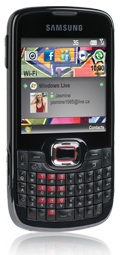 So Windows Mobile 6.5 isn’t gone just yet. The new Samsung Messenger GT-B7330 is confirmed to be released running the aging
So Windows Mobile 6.5 isn’t gone just yet. The new Samsung Messenger GT-B7330 is confirmed to be released running the aging operating system via Bell and Rogers in the near future. April 28th on Bell and May 4th on Rogers to be exact, with Telus following later in the year, though no date is given.
To learn more about the device visit Samsung Canada’s website
[via Mobile Syrup]
Follow me on twitterMicrosoft Kin One and Kin Two Social Phones Ousted
Apr 12th

Microsoft, failing not to be outshined by Apple time and time again, has released information about their new social phones, the Kin One and Kin Two.
Kin One seems to be an ugly, portrait-slider clamshell design with a low-res screen. It will likely be marketed to teenagers looking for basic social functionality without an expensive data plan. Verizon seems to be the partner carrier for these phones, and may release a special social plan for them to keep costs down.
Kin One specs are as follows:
- Form factor: Vertical slide, QWERTY
- Display: 2.6″ TFT, QVGA (320 x 240), capacitive touch screen
- Camera: 5.0MP CMOS anti-shake, autofocus, dual LED flash
- Speakers: Mono
- Memory: 256MB DDR RAM, 4GB storage
- Battery: 1240 mAh
- Connectivity: EV-DO Rev A, Bluetooth 2.1 w/A2DP, Hi-speed
USB, 802.11b/g - Other: Assisted GPS, FM radio, accelerometer
The Kin Two seems to be a bit more of a smart phone and as such, will likely appeal to the iPhone-centred market (though by the time it is out, Apple will have released their new iPhone, and the chase will continue). Specs are as follows:
- Form Factor: Vertical slide, QWERTY
- Display: 3.4″ TFT, QVGA (480 x 320), capacitive touch screen
- Camera: 8.0MP HDR CMOS from Omnivision with anti-shake,
autofocus, Lumi LED flash - Speakers: Mono
- Memory: 256MB DDR RAM, 8GB storage
- Battery: 1390 mAh
- Connectivity: EV-DO Rev A, Bluetooth 2.1 w/A2DP, Hi-speed
USB, 802.11b/g - Other: Assisted GPS, FM radio, accelerometer
Stay tuned for more info as it arrives.

Windows Phone 7 Re-Brands Itself….Again
Apr 5th
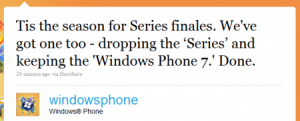
What was once “Windows Mobile” then “Windows Phone 7 Series”, is now settled at “Windows Phone 7″ for the newly reinvigorated OS (that has still yet to officially launch). No word yet on the effect this re-branding will have, if any, on their ongoing marketing strategy and eventual rollout of the platform. But with all the hype around Android and iPad, and to a lesser extent, Blackberry, right now, I’m not sure many will actually notice the change. But I’m glad Microsoft has decided to go with a name that’s not only easy to remember, but easier to market.
Does this name change make you want to try the new OS out even more? Leave a comment letting us know.
[Via WMExperts, originally via Twitter]
Follow me on twitter
Windows Phone 7 Series meets HTC Diamond, well sort of.
Mar 29th
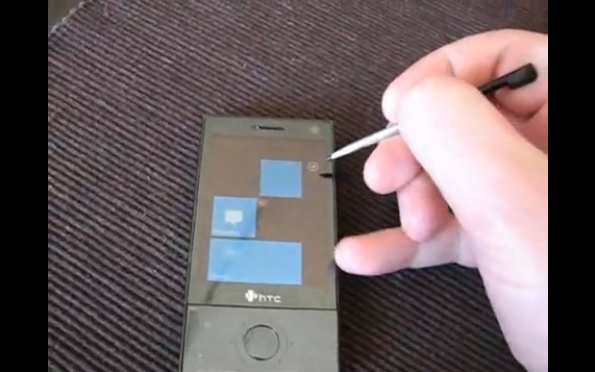 We all know about Microsoft’s strict hardware requirements for devices looking to run WP7S. Today Engadget posted video of the HTC Diamond running WP7S. Now when I say running, I mean that it was actually doing so through a remote desktop client and not actually a port of the OS. After seeing the video I think its obvious why Microsoft pushes high-end hardware so hard. This technically doesn’t reliably indicate how WP7S would actually run on the HTC Diamond but I can’t imagine the performance would be any better. Go ahead and take a gander at the video below if you can handle the laggy suspense.
We all know about Microsoft’s strict hardware requirements for devices looking to run WP7S. Today Engadget posted video of the HTC Diamond running WP7S. Now when I say running, I mean that it was actually doing so through a remote desktop client and not actually a port of the OS. After seeing the video I think its obvious why Microsoft pushes high-end hardware so hard. This technically doesn’t reliably indicate how WP7S would actually run on the HTC Diamond but I can’t imagine the performance would be any better. Go ahead and take a gander at the video below if you can handle the laggy suspense.
[Via Engadget]
Panoramic application development on WP7S with no extra code.
Mar 22nd
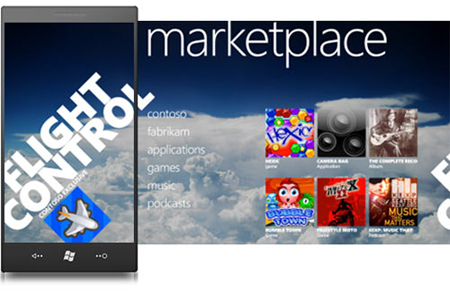 Currently application development for Windows Phone 7 Series doesn’t have a template to allow creation of applications in panoramic view. The panoramic view is the theme that encompasses the WP7S experience, in which users can slide their finger left or right to move to a new section of a particular application. Aimee at aimeegurl.com has posted a nice tutorial and some sample code to get panoramic view working for your applications. Go check it out and report back with your findings.
Currently application development for Windows Phone 7 Series doesn’t have a template to allow creation of applications in panoramic view. The panoramic view is the theme that encompasses the WP7S experience, in which users can slide their finger left or right to move to a new section of a particular application. Aimee at aimeegurl.com has posted a nice tutorial and some sample code to get panoramic view working for your applications. Go check it out and report back with your findings.
Hit the link for the full instructions.
Windows Phone 7 Series GDC Wrap Up.
Mar 18th
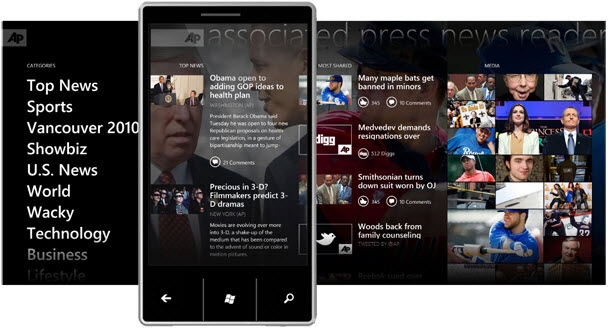 As promised Microsoft pumped out a good deal of new information regarding their upcoming mobile platform Windows Phone 7 Series. Much of the news that dropped was merely confirmation of features that we had expected would be present in the OS. Things like accelerometer support and 3D gaming were expectations for the platform and Microsoft has confirmed their role in WP7S. With these features WP7S phones should be able to compete with the 3D gaming being supported by the iPhone, Android, and more recently the WebOS.
As promised Microsoft pumped out a good deal of new information regarding their upcoming mobile platform Windows Phone 7 Series. Much of the news that dropped was merely confirmation of features that we had expected would be present in the OS. Things like accelerometer support and 3D gaming were expectations for the platform and Microsoft has confirmed their role in WP7S. With these features WP7S phones should be able to compete with the 3D gaming being supported by the iPhone, Android, and more recently the WebOS.
Though Microsoft has many powerful features lined up for WP7S, they are still leaving out a few seemingly obvious features. Microsoft has confirmed that they will not be including copy and paste in the WP7S, at least not initially. I think that it’s fair to expect it in a software update at some point. Multitasking is another feature that takes on a similar approach to what Apple did with the iPhone in that it won’t be present on non-native applications. Things like the browser and the Zune app will of course run in the background while 3rd party applications will enter a paused state when exited. Upon re-entering the application it should resume fairly seamlessly. Sure it’s not perfect, but it should allow devices to run smoother and manage memory more effectively. Microsoft claims to be working at making multitasking more intuitive with certain tasks gaining the ability to do it. I’m guessing this would apply to streaming radio apps like Pandora in that they wouldn’t have to stop just because the user wants to check their email or answer a text message.
Microsoft does have some compelling services incorporated into WP7S namely, Xbox Live and Zune integration. At GDC Microsoft showed a demo of a game playing on the Xbox 360 paused, and then resumed on the Windows Phone handset. Achievements and gamer profiles of course transfer over to the mobile experience as well. Zune integration would include access to Zune Pass subscriptions and the Zune community with all its’ social features and play tracking.
Microsoft is also pushing to make development easy for the platform by extending Silverlight and XNA as tools for application development. Developers should be familiar with these tools already as they are popular for building PC and Xbox applications.
We still have a long six months until the purported launch of Windows Phone 7 Series and there will likely be a lot of changes to come. Stay tuned for all the news to come, and drop us a comment telling us what you think of Windows Phone 7 Series.
HTC HD2 on T-Mobile on March 24th
Mar 16th
In what should be HUGE news, the much-anticipated HTC HD2 will be available to T-Mobile customers on March 24 for $199.99 with a two-year contract - or $450 outright.
Microsoft threw a wrench into many potential buyers’ plans when they announced the HD2 would not be receiving an update to the cleverly-titled Windows Phone 7. Why? Your guess is as good as mine.
So anyone still picking one of these up?
Thanks to Engadget for the heads-up.
Follow me on twitterRIM FTW! (And The Robot Revolution)
Mar 11th
 According to comScore MobiLens research, which covered mobile handset usage between October 2009 and January 2010, RIM owns the smartphone market, with 43% market share, up 1.7% from three months earlier. RIM was the only company to gain significantly in total handset numbers, too, up 1.4% to 7.8% share, and that is overall phone numbers, not just smartphones.
According to comScore MobiLens research, which covered mobile handset usage between October 2009 and January 2010, RIM owns the smartphone market, with 43% market share, up 1.7% from three months earlier. RIM was the only company to gain significantly in total handset numbers, too, up 1.4% to 7.8% share, and that is overall phone numbers, not just smartphones.
The real news, however, was Android, which gained 4.3% to own 7.1% market share. This likely came from the strong debut of the Verizon Motorola Droid, as well as multiple Motoblur Android phones from Motorola, Samsung and HTC.
Android and RIM seem to be taking OS share away from two floundering smartphone companies, Palm and Microsoft. Palm was down 2.1% and MSFT down 4% to sit at 5.7 and 15.7% share respectively.
This shouldn’t come as a surprise, considering how many handsets are arriving on the market with Android, in some form or another. There has even been talk that the wide disparity of Android OS numbers debuting on devices, from 1.5 to 2.1, is going to fragment the market too much, to the point where Google will lose “control” over its own monster. At this point, the fragmentation has only led to customer frustration, as developers are releasing applications that can only run on the newest OS version, 2.0+, which is only available on a select few phones, including Google’s own Nexus One.
There is no doubt, though, that in the immediate future, Android will gain against Microsoft and RIM, and is even taking some share away from Apple’s iPhone, whose numbers have remained steady at 25.1% share, still astronomical numbers from a single device OS.
Are you looking to purchase an Android phone? Let us know in the comments!



















Interact With Us